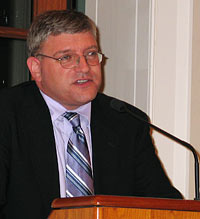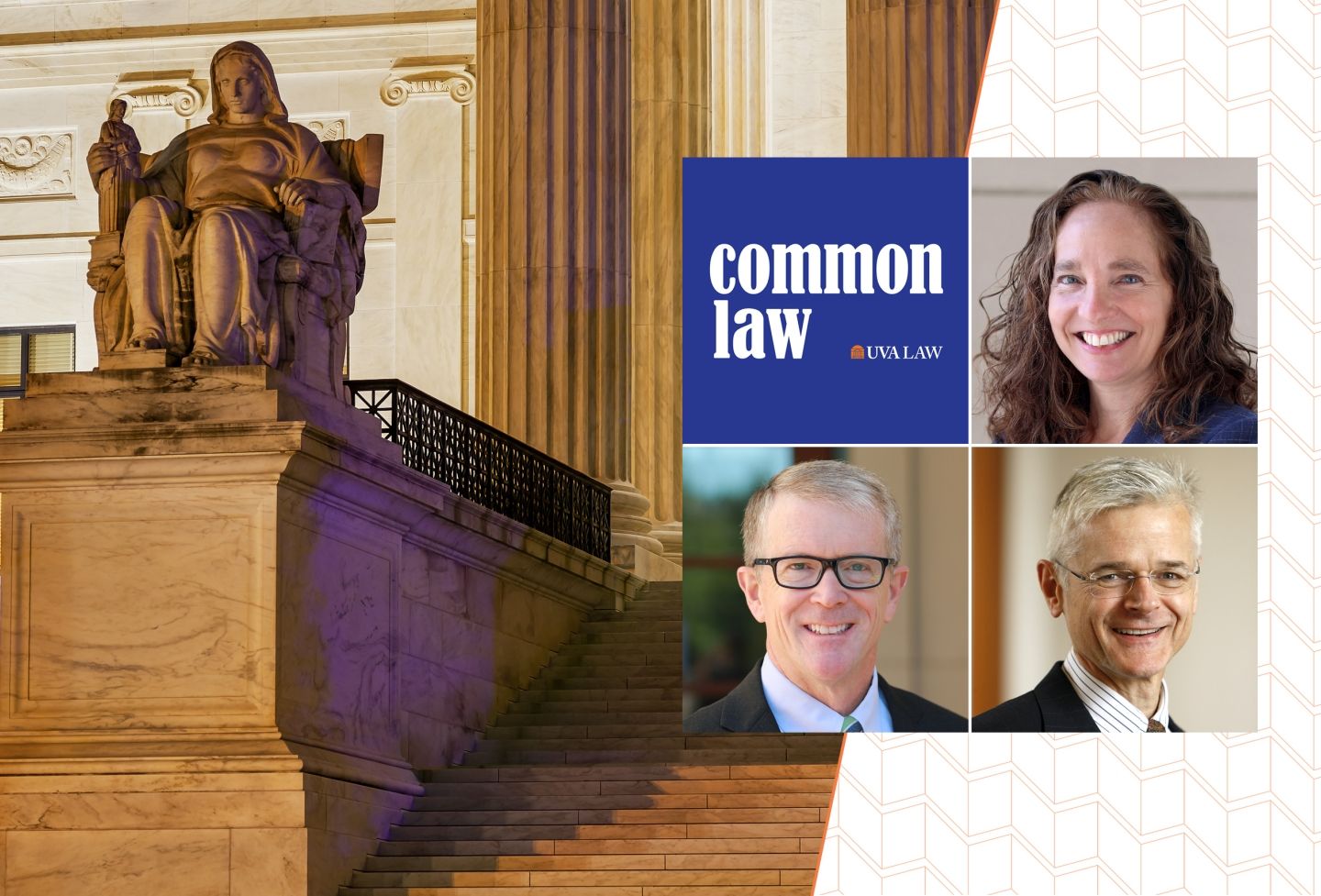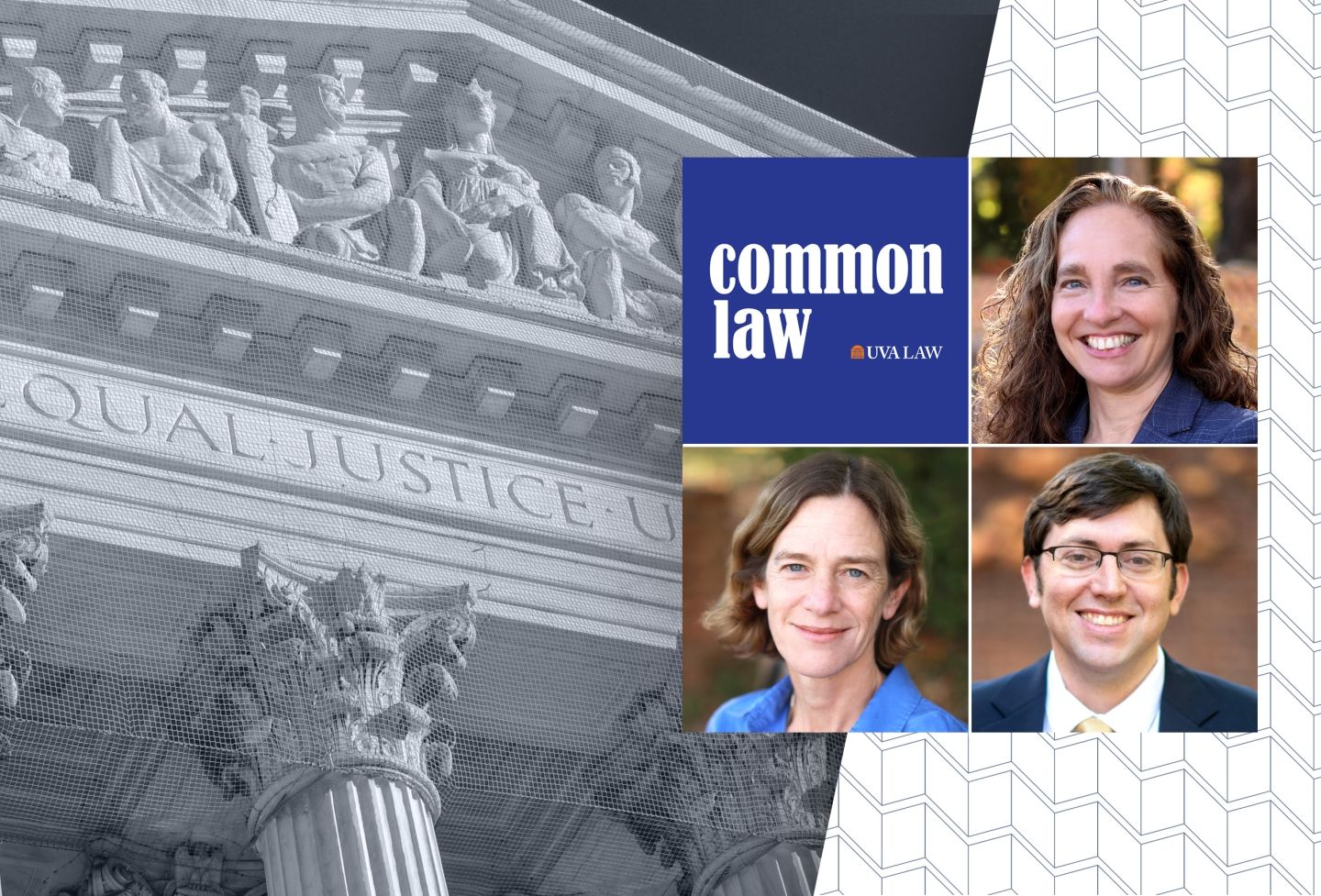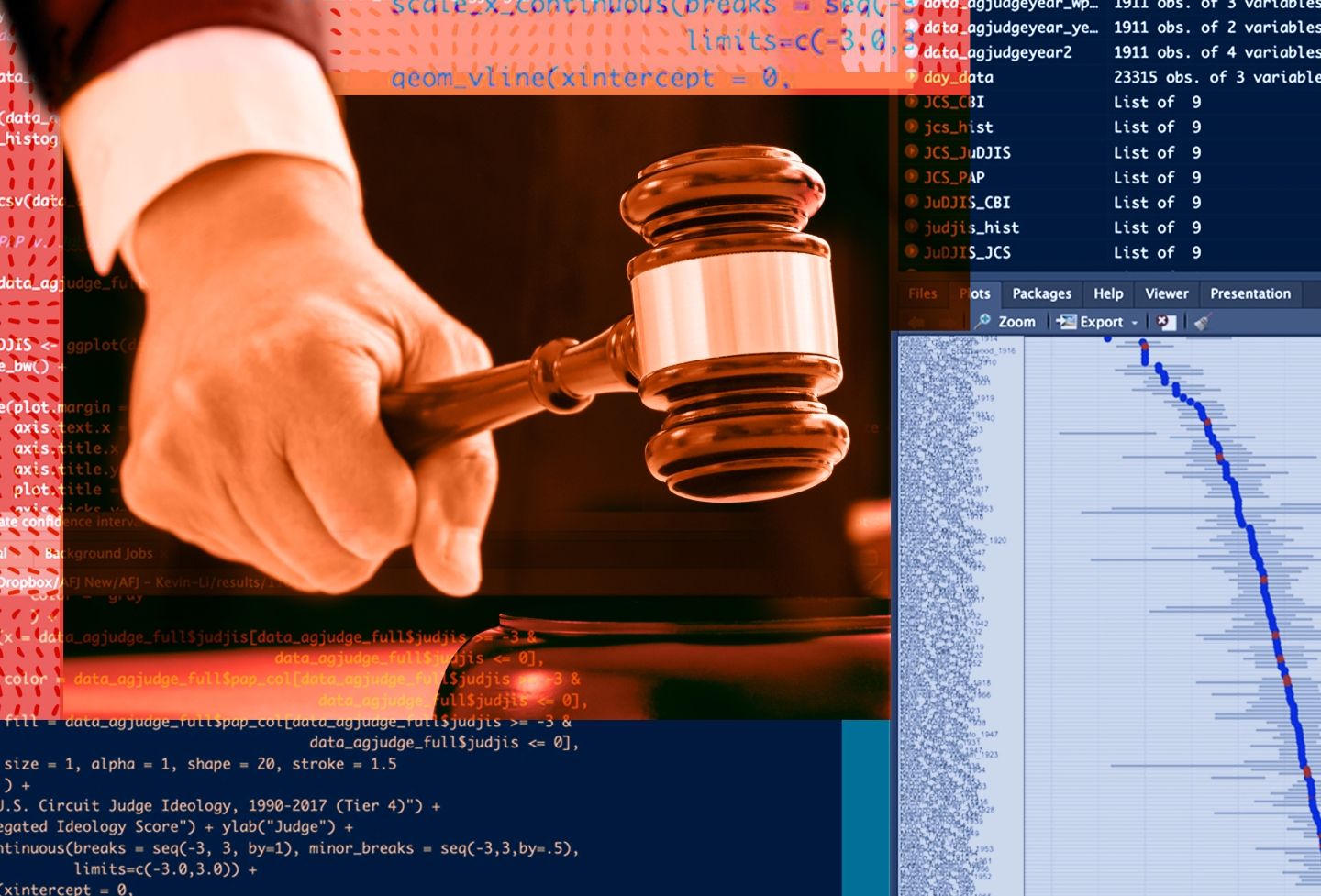Side Agreements Have Important Implications for Contract Law, Theory, Cohen Says

Laws governing side agreements—agreements made outside of publicly known contracts—should focus on protecting the legitimate interests of third parties such as investors, said law professor George Cohen at a Nov. 7 lecture marking his appointment as Brokaw Professor of Corporate Law.
“Side agreements are an example of the importance of third-party interests in contracts,” Cohen said. “Side agreements are not side shows—they are often the main event in business transactions, but [for] too long courts and commentators have not paid attention to these side agreements.”
Side agreements tend to appear when the main agreement is used as a kind of property, such as collateral to a loan, Cohen said. “Side agreements are private deals about information, and it’s information that affects the value of the contract as property or the ownership characteristics of the contract that demarcates property, and that second contract… is kept hidden from the interested third parties who are otherwise trying to figure out what the value of the property is or what the property characteristics of the main agreement are,” he said. “Side agreements are basically bad when there’s no good reason for keeping this information secret from the third parties, which is otherwise known as fraud.”
Side agreements are usually made at the same time as the main agreement and cover the same subject matter, but they often modify or undermine the main agreement. “The main agreement giveth, and the side agreement taketh away,” Cohen joked.
Cohen argued that third-party interests should matter in contract law and that contract law should take these interests into account when deciding whether to enforce side agreements
Cohen, who is serving as an expert in the Enron case, pointed to the defunct company’s deal with Merrill Lynch purportedly to sell barges that operated as floating power plants in Nigeria. No one wanted to purchase the barges, but Enron used its connections to the investment giant to coax an agreement in which Merrill Lynch bought the barges, allowing Enron to report the sale as income and profit. The side agreement, which was not shown to accountants, stipulated that Enron would later buy back the barges at the sale price, plus interest.
“This resulted in the first criminal convictions of several Merrill Lynch executives in the Enron case several years ago,” Cohen said. Although the conviction was later thrown out on a technicality, the court did not question the conclusion that Enron’s actions were fraudulent in its opinion.
Court discussions of side agreements date back at least to the 19th century and likely earlier, and they are a frequent feature of recent financial scandals as well, Cohen said. “There’s at least some anecdotal and circumstantial evidence that side agreements are a pretty important phenomenon engaged in by pretty sophisticated people with lots of money at stake,” he said. “Side agreements used for fraudulent purposes tend to involve a kind of omission that is hiding the side agreement, rather than commission—that is, an affirmative misrepresentation.” Side agreements effectively co-opt the other party (Merrill Lynch in the Enron example) so they won’t blow the whistle on the agreement. Using the contract as property also makes the property easier to hide than tangible property, he said.
Cohen gave the example of an Arkansas chicken company that needed a bigger freezer in which to store supplies. The company crafted an agreement with a builder to sell the land on which the freezer would be built and lease it back for six years to use it for the freezer, with the option to buy the property and freezer back at fair-market value. A side agreement instead made the price of buying the property back the difference between the lease payments and the construction costs plus the interest. In essence, the chicken company pretended to have a lease, but it actually had a loan because of the side agreement. The chicken company “had several entities that it needed to deceive.” The company was concerned with violating usury laws, so it hid the side agreement from its lawyer; it hid the side agreement from its accountants and IRS because the main agreement allowed the company to pay lower taxes (a full deduction for lease payments); and the company hid the side agreement from its own bank, which had required the company to maintain a certain asset-to-liability ratio. “There was too much debt being taken on by the chicken company” under the side agreement, and the bank would have blocked the deal had it known about it, he explained.
Tyson subsequently bought the chicken company, and Tyson didn’t know about the agreement until the deal was completed. The builder then decided to take out a loan and use the freezer as collateral, without revealing the side agreement to Tyson or its own bank. “The problem is, the bank that this builder gets the loan from goes under,” Cohen said. Tyson later wanted to exercise its option to buy the freezer at the side agreement price, because the builder would actually owe money to Tyson since interest rates had plummeted. “The only problem for Tyson was that it couldn’t get clear title” because the builder had not paid back its loan. Finally, when the federal insurance regulators took over control of the bankrupt bank, Tyson could not enforce the side agreement because the “D’Oench Duhme” doctrine makes such side agreements unenforceable against the government
“You have all these different ways that this side agreement and [subsequent] agreements are used to defraud a whole variety of types of people,” Cohen explained.
The parol evidence rule of contract law makes side agreements unenforceable in many circumstances, but focuses doctrinally on whether the main agreement is complete enough or whether the side agreement contradicts the main agreement. Under an exception to the parol evidence rule, if a party introduces evidence that the main agreement was a sham, then evidence of side agreements may be considered. “The focus [of the doctrine] is on the wrong thing…In many of these cases the evidence of the side agreement is highly credible, because it’s the real deal, but the problem is that it is fraud, and should the law be sanctioning fraud [by allowing the side agreement to be enforced]?” Cohen said. “Most troubling, at least from my perspective, courts almost entirely ignore the effects of enforcement or nonenforcement on third-party interests.”
Other laws also apply to side agreements, Cohen noted. For example, side agreements can themselves be evidence of securities fraud. Secondary parties such as Merrill Lynch could be subject to laws regarding aiding and abetting, which can be a crime as well as a civil wrong, although private damage suits for aiding and abetting securities fraud are no longer permitted.
When evaluating side agreements, courts might ask whether the agreement has any plausible purpose other than to defraud one or more parties, Cohen suggested. Some scholars have argued that contracting parties might use a side agreement to avoid drafting costs. Drafting costs “might explain some side agreements [but] it doesn’t [seem to] explain a lot of them,” Cohen said. Courts and commentators sometimes suggest that standardized forms limits what can be included in contracts, but Cohen countered that standardized forms are in some cases used to discourage side agreements, and when they are not, forms often have room for written additions.
Another innocent explanation sometimes offered for side agreements is that they may signal a desire for non-legal enforcement. “How confident are we… that side agreements really do serve as this kind of signal?” Cohen asked. Cohen argued that if contracting parties really want part of their agreement not to be legally enforceable, they could stipulate that in the main agreement.
After looking for plausible innocent reasons for side agreements, courts should consider whether third parties know of the main agreement but not the side agreement. Third parties might include investors, creditors, people who purchase contract rights, gatekeepers like lawyers and accountants, customers, the government, and unwitting or new personnel among the parties’ companies.
The fact that the side agreement is kept hidden from third parties may not necessarily mean that the third parties are being defrauded. There may be justification for a secret side agreement if the agreement is necessary to protect a trade secret, intellectual property, or personnel privacy. “[But] even if there are legitimate secrecy needs, or secrecy interests, are secret side agreements always necessary to protect those legitimate secrecy interests?” Cohen offered that in some cases the main agreement could explain that it deals with a confidential matter without revealing the confidential information itself—such as an employee signing a contract not to reveal trade secrets. Alternatively, the main agreement itself could be secret or relevant parts could be redacted when the main agreement is shown to third parties who have an interest in the non-confidential parts
Once the side agreement is determined to be part of a fraudulent transaction, the law should focus on several goals: to deter fraudulent side agreements; to facilitate the protection of third-party interests, such as recovery for fraud; and to punish the primary party (the party who is the main motivating force behind the side agreement) more than the secondary party if the primary party is more culpable, Cohen said. He pointed to three options on the question of enforceability: enforce neither contract, enforce the main agreement, or enforce the side agreement.
The problem with choosing to enforce neither agreement is that neither contracting party has the incentive to reveal the fraud, which “may not be the best way to protect third-party interests.” If courts enforce the main agreement through a strict application of the parol evidence rule, it may eliminate the losses suffered by third parties, Cohen suggested. But “the secondary party may bear the full risk of the fraud.” Enforcing side agreements might help third parties in some cases. A court might choose to enforce the side agreement on the condition that the injured third party—for example, the IRS—be informed of the fraud. “One could also have other kinds of solutions that are based on the idea of notice” to the third parties, which would resolve the problem of fraud.
Side agreements also have broader implications for contract law and theory, Cohen argued. Side agreements upend the complete contract paradigm that exists within contract theory, Cohen said, because side agreements are a deliberate attempt to make the main contract incomplete. “There are lots of ways in which contract theory can benefit from thinking about side agreements and the contract-as-property idea.” He concluded with the thought that “Sometimes we need to look to the side to see what is right in front of us.”
Founded in 1819, the University of Virginia School of Law is the second-oldest continuously operating law school in the nation. Consistently ranked among the top law schools, Virginia is a world-renowned training ground for distinguished lawyers and public servants, instilling in them a commitment to leadership, integrity and community service.


